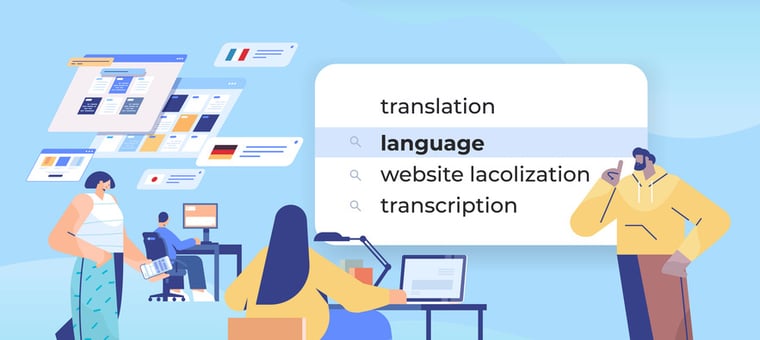How to Properly Test a Translated Website Before Going Live

Websites are still so important to any business operating in a global marketplace today. If they’re not translated correctly the results can be very damaging to your brand, your business and your profits. But if you don’t speak a language, how do you know your website is functioning properly in that language?
There are a series of tests, which encompass all aspects of your site, which we regularly take our clients through to help them with their website localization implementation.
As a Language Service Provider (LSP), translating websites and other digital platforms makes up a significant part of our business. Getting your website up and running in any language isn’t rocket science, but it does need a robust process in place to ensure it’s done properly.
Here, we’ve created high-level lists to take you through the areas that need testing before your website goes live. By the end of the article, you should have a handle on how to make sure that your website works in any language.
Linguistic Accuracy Testing
This is the foundation of website translation testing. This is the obvious part. Get the right professional linguists or native speakers to review the translated content.
That’s translators who not only know both the native and target languages, but who are also experts in your industry. They should check for:
- Grammar, syntax, and spelling errors.
- Misinterpretations of meaning.
- Incorrect translations of industry-specific terms or idioms.
As a final guarantee that the translation is accurate, you can do back-translation (translating the content back into the source language) to verify the content is correct.
Functional Testing
Of course, your translated website must function as seamlessly as your original version. Testers should evaluate:
- Navigation — Ensuring menus, buttons, and links work properly in each language version.
- Forms and input fields — Verifying that user input is accepted in various languages without errors.
- Search functionality — Checking if search queries return relevant results in the translated language.
- Interactive elements — Confirming that dropdown menus, sliders, and other User Interface (UI) components behave as expected.
Localization Testing
Localization goes beyond direct translation and ensures that content is adapted to the cultural and regional context. Localized content feels as though it wasn’t translated but actually created in the new language.
Localization testing includes:
- Date, time, and number formats — Ensuring compliance and consistency with local conventions.
- Currency and units of measurement — Adapting them based on the target audience.
- Cultural appropriateness — Verifying that images, symbols, and references resonate with the local culture and don’t cause offense. For example, in strict Muslim countries, are the images on the website in line with customs around the appropriate amount of skin on display?
- Legal and compliance considerations — Ensuring adherence to local laws regarding data privacy, accessibility, and consumer rights.
Consistency and Terminology Testing
If your business has multiple language versions, maintaining consistency is crucial. A style guide and glossary of terms should be followed throughout the site.
Tools like Translation Memory (TM) and Computer-Assisted Translation (CAT) software will help ensure uniformity.
Testing should include:
- Consistency of terminology across different sections.
- Standardized tone and voice in all translations.
- Cohesion in formatting, including fonts, capitalization, and punctuation.
User Experience (UX) and Usability Testing
UX can’t suffer because of a translation. UX has to be considered in line with the new language.
Usability testing with native speakers from the target audience will identify pain points, such as:
- Readability and clarity of text.
- Ease of navigation in different languages.
- Adequacy of call-to-action buttons.
- Alignment and spacing issues due to text expansion, contraction or being read right to left, for example Hebrew, Arabic, Kurdish and Urdu, or top to bottom, like Chinese, Japanese and Korean.
Search Engine Optimization (SEO) and Metadata Testing
SEO is just as critical for translated websites as it is for the original version. You should be familiar with the main search engines and what they look for when ranking content in their searches.
Google is the benchmark in most of the English-speaking world, but it’s banned in China so if you’re entering this lucrative market, you’d better pay attention to Baidhu and Bing. Testing should cover:
- Proper translation of meta titles and descriptions.
- Localization of keywords for better search visibility.
- Verification of hreflang tags to ensure search engines serve the correct language version to users.
Technical and Performance Testing
It goes without saying that a translated website must be technically sound and perform efficiently.
To verify this, check the following:
- Cross-browser and device compatibility — Ensuring the site works across different browsers (the right ones for the country) and screen sizes.
- Page load speed — Testing the impact of additional languages on website performance.
- Encoding and character support — Checking for proper rendering of special characters in different scripts.
Automated vs. Manual Testing
A lot of automated testing can be done, but there are some areas that just need people to get on and navigate around for themselves to come across issues organically in the way your audience will. This combination of automated and manual testing ensures thorough evaluation.
A few things to think about during each phase:
- Automated — Test tools like Selenium, BrowserStack, and Google Lighthouse to help check functionality and performance.
- Manual — Test with native speakers to ensure cultural relevance, linguistic quality, and User Experience (UX) evaluation.
Getting it Right
Your website has to be right. If you’re undertaking the testing process yourself, or with your digital team, now you have a guide on the things to consider for a translated site.
UX, UI, SEO, all levels of functionality and, of course, the correct translation of content into your new language. A belt and braces approach is to have your LSP lead this process as it’ll likely be something they’re used to seeing every day.
If you’re looking to translate your website into a new language or have questions about the process we’d love to talk to you.
Consultations are free and there’s no obligation. You’re in safe hands with us as we’re ISO 17100 and ISO 9001 compliant, have over twenty years of professional translation experience, and have earned the trust of organizations around the world.






